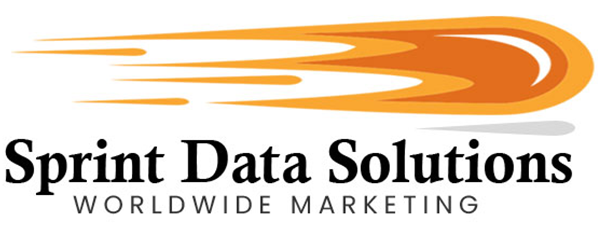Insurance Becomes More Important In Times Of Volatility
The concept of insurance stands as a textbook example of the philosophy, “It’s better to have it and not need it than need it and not have it.” Life is unpredictable, and accidents—ranging from minor mishaps to major disasters—can impose overwhelming financial burdens on individuals and businesses alike. In many situations, those affected may not have the immediate resources necessary for recovery. Insurance acts as a crucial safety net, allowing policyholders to trade a manageable, predictable expense—the monthly premium—for the reassurance that in times of serious need, the financial backing they require will be available. Over time, those consistent premium payments accumulate into a powerful resource that can make an enormous difference when misfortune strikes.
Moreover, in certain circumstances, having insurance isn’t merely advisable; it’s mandated by law. For example, nearly every U.S. state requires vehicle owners to carry at least a minimum level of auto insurance coverage before they are legally permitted to operate a vehicle on public roads. This legal requirement underscores the importance of insurance in protecting not only the individual but also society at large, by ensuring that the costs of accidents don’t fall solely on the victims. While it might feel like a frustrating or unnecessary expense during smooth periods, insurance can literally mean the difference between survival and financial ruin during unexpected crises.
Despite its importance, many Americans tend to view insurance similarly to eating vegetables: they recognize its value and necessity but prefer not to engage with it deeply. As a result, the details, benefits, and even critical differences between policies often go overlooked. This creates an opportunity—and a responsibility—for those in the insurance industry to market their products with clarity, honesty, and education at the forefront. Consumers and business owners alike can benefit from marketing strategies that not only highlight the advantages of a particular insurance plan but also illuminate hidden pitfalls or shortcomings in their current coverage. Effective promotion doesn’t just push products—it informs and empowers, helping customers make smarter choices about protecting their health, assets, businesses, and futures.

Who Benefits?
There is a wide range of insurance products available to meet the diverse needs of both individual consumers and businesses throughout the United States. These offerings include essential policies such as health, auto, and homeowners insurance for individuals, as well as specialized options like commercial liability, workers’ compensation, and professional indemnity insurance for businesses. Each type of insurance is designed to provide financial protection against unforeseen risks, helping individuals secure their personal assets and assisting companies in safeguarding their operations, employees, and reputations. Just a few places where insurance can better target the market include:
Health Insurance
Healthcare insurance is a critical concern that weighs heavily on the minds of many Americans. Despite being one of the most technologically advanced nations, the United States often couples its remarkable medical innovations and life-saving treatments with some of the highest healthcare costs in the world. For countless individuals—particularly those who are self-employed, working part-time, or employed in roles without robust benefits—the financial burden of a serious illness or emergency can be catastrophic. Without comprehensive coverage, families risk facing insurmountable debt that could affect future generations, or worse, they might be forced to forgo necessary treatments altogether due to cost barriers. Although the Affordable Care Act (ACA) significantly expanded access to healthcare insurance, introducing subsidies and protections for pre-existing conditions, many Americans still find the options confusing, expensive, or insufficient for their needs. Consequently, there is a growing demand for innovative and affordable health insurance alternatives. Solutions that offer broader coverage, lower out-of-pocket expenses, and more transparent pricing continue to attract significant interest from a population that remains deeply anxious about the relentless rise of healthcare expenses.
Medicare Part B
While traditional health insurance is a major concern for many Americans, “Medicare Part B” plays an equally crucial role in ensuring access to necessary healthcare services, particularly as people age or manage chronic conditions. Unlike the focus on catastrophic events—such as major surgeries, prolonged hospital stays, or expensive treatments like chemotherapy and radiation therapy—Medicare Part B addresses the critical but often overlooked everyday healthcare needs. These include regular doctor visits, preventative screenings, outpatient procedures, ambulance services, durable medical equipment like wheelchairs, blood glucose monitors, and even mental health counseling. Such routine expenses can quickly accumulate and become a substantial financial burden without proper coverage. As a result, public awareness and consumer anxiety surrounding Medicare Part B can match, or even exceed, that of general health insurance concerns. When effectively marketed to the appropriate demographics—such as seniors approaching retirement, individuals managing disabilities, and those with chronic illnesses—Medicare Part B insurance solutions can generate significant interest, engagement, and ultimately strong enrollment outcomes. Providing comprehensive information and emphasizing how Medicare Part B fills essential healthcare gaps is key to resonating with this highly receptive market.
Life Insurance
The loss of a loved one is an inevitable part of life, but it often brings profound emotional and financial hardship to surviving family and friends. This is especially significant when the deceased played a crucial role as the primary income provider, funding essential needs such as food, housing, and education—particularly for dependent children. In recognition of this vulnerability, life insurance has become one of the most longstanding and essential types of insurance coverage, with most Americans at least passingly familiar with its importance. However, despite its widespread presence, life insurance products can be incredibly intricate. Many policies are packed with clauses, exclusions, and optional “riders” that, without clear understanding, may reduce the benefits or complicate payouts when families need them most. These complexities often leave policyholders exposed to hidden pitfalls. Because of this, there is always a valuable opportunity for insurance providers to distinguish themselves by offering clearer terms, broader coverage, fewer restrictive conditions, and more flexible, customer-friendly benefits—ultimately creating a product that not only protects but truly supports families during their most vulnerable moments.
Variable Annuity Holders
Variable annuities are specialized financial products offered by insurance companies that blend elements of investment and retirement planning. They require an initial lump-sum payment or a series of scheduled smaller contributions. In return, the invested funds grow on a tax-deferred basis, with distributions beginning at a predetermined future date, either to the policyholder or to beneficiaries like spouses or children. Unlike traditional insurance policies, variable annuities are designed primarily as long-term investment vehicles, providing potential growth through underlying investment options such as mutual funds. Their value can fluctuate based on market performance, offering the opportunity for higher returns compared to fixed annuities but also carrying greater risk. Because of these investment opportunities and the promise of eventual income, variable annuities appeal to a wide range of demographics, particularly those nearing retirement, investors seeking tax-advantaged growth, or individuals planning for legacy transfers to loved ones.
Auto Insurance
While auto insurance is generally mandatory for anyone who wishes to legally operate a vehicle, it’s important to recognize that not all auto insurance policies offer the same level of value, protection, or benefits. The marketplace is saturated with a wide range of policy options, each varying significantly in terms of coverage limits, premiums, deductibles, and additional perks. Many larger insurance providers entice customers with bundling discounts, encouraging them to combine auto, home, and life insurance policies under one company. However, these bundled savings can sometimes mask higher costs or less comprehensive coverage in other areas. As a result, many drivers end up with policies that are not well-tailored to their actual needs or driving habits. This opens significant opportunities in the auto insurance sector for companies willing to offer competitively priced products, customizable coverage options, and genuinely consumer-friendly practices that educate customers and highlight better alternatives they may not have realized were available.
Home Insurance
While home insurance is not a legal requirement in the same way that auto insurance is mandated by state laws, it effectively becomes a necessity for many homebuyers. This is because mortgage lenders almost universally require borrowers to secure homeowners insurance as a condition of approving a loan. Without insurance, financing the purchase of a home is often impossible, making it a de facto obligation for most buyers. Homeowners insurance itself is a mature, highly diversified market, offering a wide range of policy options that can sometimes overwhelm consumers. Despite this, many policyholders end up selecting more basic or bundled policies — often motivated by the lure of discounts when multiple insurance products, such as auto and home coverage, are packaged together. However, more comprehensive and competitively priced products are readily available, and policyholders who are informed about enhanced coverage features, better claim processes, and potential long-term savings are frequently persuaded to switch to superior options that offer greater protection and value for their investment.
Renter Insurance
In recent years, insurance providers have recognized that the need for financial protection extends beyond traditional property owners. In densely populated cities like New York, it is common for residents to spend their entire lives in rent-controlled apartments without ever purchasing a home. These renters face many of the same risks as homeowners, including fire, theft, vandalism, and personal liability, making insurance an essential safeguard. As economic pressures continue to make homeownership less attainable for many, the number of long-term renters is steadily increasing across the country. This demographic shift has opened significant opportunities for the insurance market to tailor products specifically for renters. With strategic marketing efforts and consumer education, renters are becoming more aware of how a well-designed insurance policy can protect their personal belongings, offer liability coverage, and even provide temporary living arrangements in case of disaster. By understanding the evolving needs of this growing market, insurers can offer peace of mind and financial security to millions who choose to rent rather than own.
Vault Insurance
Placing valuables and prized possessions in a vault is often seen as the ultimate step for securing peace of mind and safeguarding assets. However, even the most secure vaults are not immune to risks such as natural disasters, unforeseen accidents, or sophisticated theft attempts. In the unfortunate event that these risks materialize, owners can find themselves facing devastating losses, despite having made substantial investments in vault security. This is where vault insurance becomes an essential safeguard. Beyond just offering a secure location, vault insurance ensures financial protection and recovery in case of loss or damage. For individuals who already recognize the importance of investing in security, adding a layer of insurance is a natural and worthwhile decision. With a thoughtful marketing approach emphasizing long-term protection, risk mitigation, and the true cost of losing irreplaceable valuables, it becomes much easier to persuade vault users to take that additional, critical step toward comprehensive peace of mind.
Commercial Business Insurance
One of the earliest forms of insurance in human history was developed to safeguard businesses, particularly to protect valuable cargo during risky voyages to distant markets. This foundational need has evolved into today’s broad and intricate world of commercial business insurance, which spans a vast range of industries and asset types. Modern commercial insurance covers not just the shipping of goods, but also the protection of properties, machinery, intellectual property, cyber risks, and even employee liability. Savvy business owners understand that comprehensive coverage is essential for ensuring the resilience and longevity of their operations. In a competitive marketplace, there is a constant demand for commercial business insurance policies that are not only robust and tailored to specific needs but also competitively priced to offer maximum value. As businesses continue to innovate and expand globally, the need for dynamic and adaptable insurance solutions grows stronger, reinforcing the sector’s vital role in global commerce.
Personal Property Insurance
Many people mistakenly believe that securing a home insurance policy means they have complete protection. However, especially with home insurance policies that come with low premiums, the reality is often quite different. In these cases, while the physical structure of the home—walls, roof, and foundation—may be covered, the personal belongings inside, such as electronics, furniture, jewelry, and priceless family heirlooms, might not be protected at all. Personal property insurance is an essential addition for anyone who wants comprehensive coverage, safeguarding not just the building itself but everything valuable inside it. This kind of insurance is crucial not only for homeowners but also for renters, who may not have any structural responsibility but still risk losing their possessions to theft, fire, or natural disasters. In many situations, the items within a home carry greater personal or financial value than the building itself. Personal property insurance offers peace of mind, making it an ideal product to recommend to individuals who place significant value on their belongings and want to ensure full protection.

Insurance Bond
An insurance bond, while distinct from a traditional insurance policy, operates in a related sphere by serving as a financial and legal guarantee that obligations will be met. Essentially, when a party takes out a bond, they are providing assurance to another party that they possess the financial backing to fulfill a commitment or cover potential losses if necessary. Bonds come in various forms, including fidelity bonds that protect businesses against employee dishonesty, and bid or performance bonds that ensure contractors have the capacity and resources to complete construction projects as agreed. The critical function of bonds is to establish trust and credibility, making them essential across a wide range of industries. Given the ongoing demand for these assurances—whether for new ventures, compliance with regulatory requirements, or project-specific needs—there is a consistent and valuable market for insurance bonds. Proactively marketing these products to businesses, contractors, and entrepreneurs at pivotal stages of their growth can yield significant opportunities and foster long-term client relationships.
Business Interruption Insurance
When a home is impacted by a disaster, the consequences typically involve finding temporary shelter until repairs are completed, but this disruption rarely threatens the homeowner’s ability to earn a living. In contrast, when a disaster forces a business to shut down, the financial stakes are much higher, with the business owner and employees facing significant loss of income. Business interruption insurance plays a crucial role in safeguarding businesses against this type of economic fallout. Unlike standard property insurance, which only covers physical damages, business interruption insurance focuses on the revenue and operations side of recovery. It can cover ongoing expenses such as loan payments, employee salaries, rent for temporary locations, and even assist with the costs of relocating and resuming operations. By tailoring coverage to fit the unique needs of different industries and business models, business interruption insurance ensures that a company can stay financially afloat during the critical period following a disaster, helping business owners protect not just their property, but their future.
Fire Insurance
Fire insurance remains one of the most vital and widely recognized forms of property protection. The catastrophic damage a fire can inflict on homes, businesses, and personal belongings is well understood, and the emotional and financial toll can be overwhelming without proper safeguards. Many individuals and businesses invest in fire insurance to gain the invaluable peace of mind that comes with knowing they are protected against such potentially devastating losses. However, the scope and quality of fire insurance coverage can vary significantly between providers. Some policies may only offer minimal protection, leaving policyholders vulnerable to out-of-pocket expenses for rebuilding, repairs, or replacement. Conversely, companies that provide more comprehensive coverage options—along with competitive rates—position themselves strongly in the market, as savvy consumers are often willing to negotiate for policies that offer superior security and better value for their investment.
High-Risk Insurance
Insurance coverage is essential for financial security, but not everyone qualifies for standard policies. This is where non-standard, or “high-risk,” insurance policies come into play. These specialized policies cater to individuals and businesses that traditional insurers deem too risky—such as drivers with multiple traffic violations, lapsed payment histories, or property owners purchasing vacant or investment properties. Although these applicants fall outside normal underwriting guidelines, they still seek the protection and peace of mind that insurance offers. As a result, the high-risk insurance market, while niche, remains vibrant and profitable for insurers who know how to reach and serve these customers effectively.

How We Can Help
Sprint Data Solutions Worldwide Marketing is a proudly 100% American-owned and operated company, founded by a disabled veteran with a mission to support businesses through cutting-edge marketing solutions. Originally launched as a direct mail marketing firm, we have evolved into a comprehensive provider of domestic, continental, and international marketing services. Our expertise includes offering highly targeted insurance consumer and business lists, meticulously curated through a combination of frequent database updates, partnerships with multiple trusted data sources, and the integration of advanced AI-driven analytics and machine learning techniques. We are committed to providing competitively priced, high-accuracy lists that help our clients reach their ideal audience effectively across mail, telephone, email, and SMS/text-based channels. Whether you are seeking prospects based on specific geographic, demographic, or behavioral criteria, Sprint Data Solutions Worldwide Marketing is ready to help you achieve exceptional marketing results. Contact us today to learn how we can power your next campaign with precision and reliability.






